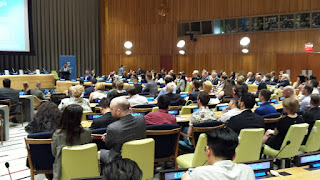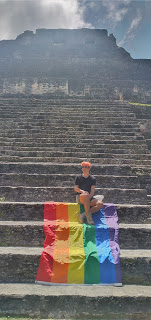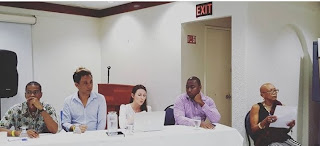Gender Identity Politics: Not Western, but a human reality!
Posted March 25th, 2013
Belize Action and its partners has said that sexual oreintation and gender identity are western concepts, research done by supporters have showed that western concepts actually have a history if criminalizing sexual orientation and gender identity. The research below on gender identity looks at particular countries and region where the issue of gender was local, not western.Their attempt to label our work as a foreign import ignores that evangelical churches, by their nature, are importations of a fundamentalist agenda from the US. One group comes to mind is the FourSquares Churches where they claimed that are supporting The Calvary Temple and Open Bible churches in Belize City as well as others in the western part of the country. We have seen pastor Scott Stirm connection to to Dominionist theology and really odd beliefs about raising the dead. The blog toucan view http://twocanview.com/tag/scott-stirm/ points out brilliantly the ideology along with the lack of integrity which evangelicals have are know for in their opposition of their work. The following youtube video shows how displaced the evangelical message is from the reality of human rights. Please see full video http://www.youtube.com/watch?v =iupj5ns6s8w&list=UU5O114-PQNY kurl Tg 6h ekZw&index=1 However, the work to bring the issue of rights enforcement to life will continue as the irrational seek to replicate hate with diplomatic language that the public could swallow. Beyond that here are a list of names about gender, that most of us may have not heard about.
.just off the cuff I come up with India recognizes 3 genders: Male, Female and hijra (and in some areas sadhin); Indonesia recognizes 5 genders: Male, Female, Bisu, Chalalai, and Chalabai; Pakistan also recognizes male, female and hijra; The Philippines recognize 3 genders, Male, Female and bakla; Thailand recognizes 3 genders: Male, Female and kathoey. If I researched, I could probably find more. Glad they are owning that alternative sexuality is part of their cultures
Middle East – Oman recognized 3 genders: male, female and xanith
Europe – Albania recognizes 3 genders: males, females and sworn virgins, who are female but dress and act as men. They are not allowed to marry but take on the role of a man if there are no male heirs to be the “head” of the family.
Africa – Benin recognized 3 genders: male, female, and mino (females taking on male traits); Democratic Republic of the Congo, Mbo people, recognized 3 genders: male, female and Mangaiko; Ancient Egypt recognized 3 genders: male, female and sekhet; Ethiopia recognized 3 genders: male, female and ashtime; Kenya recognized 3 genders: male, female and Mashoga; Madagascar recognized 3 genders: Male, female, and sekrata; Tanzania recognized 3 genders: male, female and Mashoga
Polynesia – Samoa recognizes 3 genders: Male, Female and Fa'afafine; Tonga recognizes 3 genders: Male, Female, and fakaleiti; Traditional Hawaiian culture recognized 3 genders: Male, Female, and Māhū; Cook Islands recognized 4 genders: Male, Female, 'akava'ine, and 'akatāne; New Zealand Māori recognized 4 genders: Male, female, whaka-wahine, and whaka-tāne; Fiji recognized 3 genders: male, female and Vaka sa lewa lewa; Tahiti recognized 3 genders: male, female and rae rae
North America -- Blackfoot Indians recognized 3 genders: ninauposkitzipxpe were women who took on male roles; Cheyenne Indians had two spirit people who accompanied men in battle, were healers and served as matchmakers; Crow Indians had 4 genders though I have not found their traditional names. An 1833 account by Edwin T. Denig described men and women who dressed and took on roles of the opposite sex; Lakota Indians recognized 3 genders: Winkte were men who took on female roles and were ritual keepers; Mohave Indians recognized 4 genders: hwame, males who identified as females and alyha, females who identified as males; Navajo Indians recognized 4 genders nadleehi were men who also had female spirits and dilbaa were women who also had male spirits. Both were usually healers; Zapotec Indians of Mexico recognizes 3 genders: Muxe are men who dress as women or wear mens clothes but use make-up as women; Zuni Indians recognized 3 genders: lhamana were men who also had female spirits and were priests and mediators. These are just a few of the ones I found. According to a notation Charles Callender and Lee Kochems (1983), 113 native North American societies provided a third gender status…I thus assume they published a book on the subject. And my guess would be that as the phenomenon of Two-Spirit peoples is studies in more depth, more will be identified.
South America – Inca recognized a 3rd gender: quariwarmi were shaman and expected to be androgynous, living in both present and past, and both living and dead.
Caribbean – Dominican Republic recognizes a 3rd gender which is biological. Guevedoche are typically raised as women but have hermaphroditic or pseudo-hermaphroditic genitalia. This is the only instance of 3rd gender I found that was specifically based upon a genetic mutation.

Belize Action and its partners has said that sexual oreintation and gender identity are western concepts, research done by supporters have showed that western concepts actually have a history if criminalizing sexual orientation and gender identity. The research below on gender identity looks at particular countries and region where the issue of gender was local, not western.Their attempt to label our work as a foreign import ignores that evangelical churches, by their nature, are importations of a fundamentalist agenda from the US. One group comes to mind is the FourSquares Churches where they claimed that are supporting The Calvary Temple and Open Bible churches in Belize City as well as others in the western part of the country. We have seen pastor Scott Stirm connection to to Dominionist theology and really odd beliefs about raising the dead. The blog toucan view http://twocanview.com/tag/scott-stirm/ points out brilliantly the ideology along with the lack of integrity which evangelicals have are know for in their opposition of their work. The following youtube video shows how displaced the evangelical message is from the reality of human rights. Please see full video http://www.youtube.com/watch?v =iupj5ns6s8w&list=UU5O114-PQNY kurl Tg 6h ekZw&index=1 However, the work to bring the issue of rights enforcement to life will continue as the irrational seek to replicate hate with diplomatic language that the public could swallow. Beyond that here are a list of names about gender, that most of us may have not heard about.
.just off the cuff I come up with India recognizes 3 genders: Male, Female and hijra (and in some areas sadhin); Indonesia recognizes 5 genders: Male, Female, Bisu, Chalalai, and Chalabai; Pakistan also recognizes male, female and hijra; The Philippines recognize 3 genders, Male, Female and bakla; Thailand recognizes 3 genders: Male, Female and kathoey. If I researched, I could probably find more. Glad they are owning that alternative sexuality is part of their cultures
Middle East – Oman recognized 3 genders: male, female and xanith
Europe – Albania recognizes 3 genders: males, females and sworn virgins, who are female but dress and act as men. They are not allowed to marry but take on the role of a man if there are no male heirs to be the “head” of the family.
Africa – Benin recognized 3 genders: male, female, and mino (females taking on male traits); Democratic Republic of the Congo, Mbo people, recognized 3 genders: male, female and Mangaiko; Ancient Egypt recognized 3 genders: male, female and sekhet; Ethiopia recognized 3 genders: male, female and ashtime; Kenya recognized 3 genders: male, female and Mashoga; Madagascar recognized 3 genders: Male, female, and sekrata; Tanzania recognized 3 genders: male, female and Mashoga
Polynesia – Samoa recognizes 3 genders: Male, Female and Fa'afafine; Tonga recognizes 3 genders: Male, Female, and fakaleiti; Traditional Hawaiian culture recognized 3 genders: Male, Female, and Māhū; Cook Islands recognized 4 genders: Male, Female, 'akava'ine, and 'akatāne; New Zealand Māori recognized 4 genders: Male, female, whaka-wahine, and whaka-tāne; Fiji recognized 3 genders: male, female and Vaka sa lewa lewa; Tahiti recognized 3 genders: male, female and rae rae
North America -- Blackfoot Indians recognized 3 genders: ninauposkitzipxpe were women who took on male roles; Cheyenne Indians had two spirit people who accompanied men in battle, were healers and served as matchmakers; Crow Indians had 4 genders though I have not found their traditional names. An 1833 account by Edwin T. Denig described men and women who dressed and took on roles of the opposite sex; Lakota Indians recognized 3 genders: Winkte were men who took on female roles and were ritual keepers; Mohave Indians recognized 4 genders: hwame, males who identified as females and alyha, females who identified as males; Navajo Indians recognized 4 genders nadleehi were men who also had female spirits and dilbaa were women who also had male spirits. Both were usually healers; Zapotec Indians of Mexico recognizes 3 genders: Muxe are men who dress as women or wear mens clothes but use make-up as women; Zuni Indians recognized 3 genders: lhamana were men who also had female spirits and were priests and mediators. These are just a few of the ones I found. According to a notation Charles Callender and Lee Kochems (1983), 113 native North American societies provided a third gender status…I thus assume they published a book on the subject. And my guess would be that as the phenomenon of Two-Spirit peoples is studies in more depth, more will be identified.
South America – Inca recognized a 3rd gender: quariwarmi were shaman and expected to be androgynous, living in both present and past, and both living and dead.
Caribbean – Dominican Republic recognizes a 3rd gender which is biological. Guevedoche are typically raised as women but have hermaphroditic or pseudo-hermaphroditic genitalia. This is the only instance of 3rd gender I found that was specifically based upon a genetic mutation.




Comments
Post a Comment